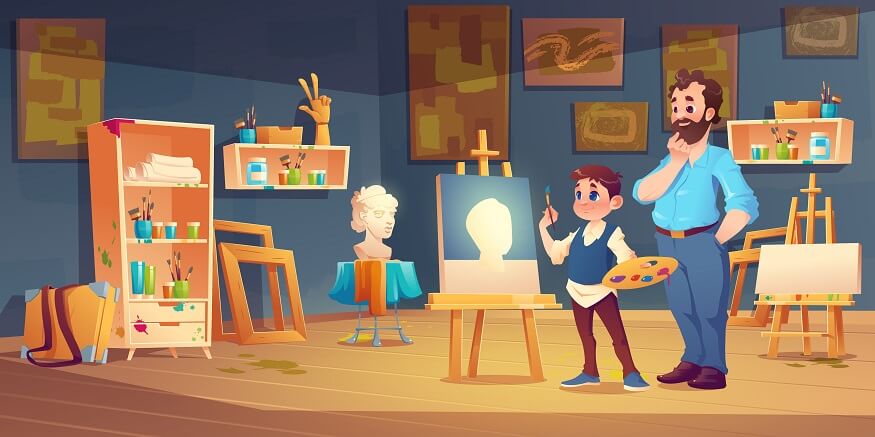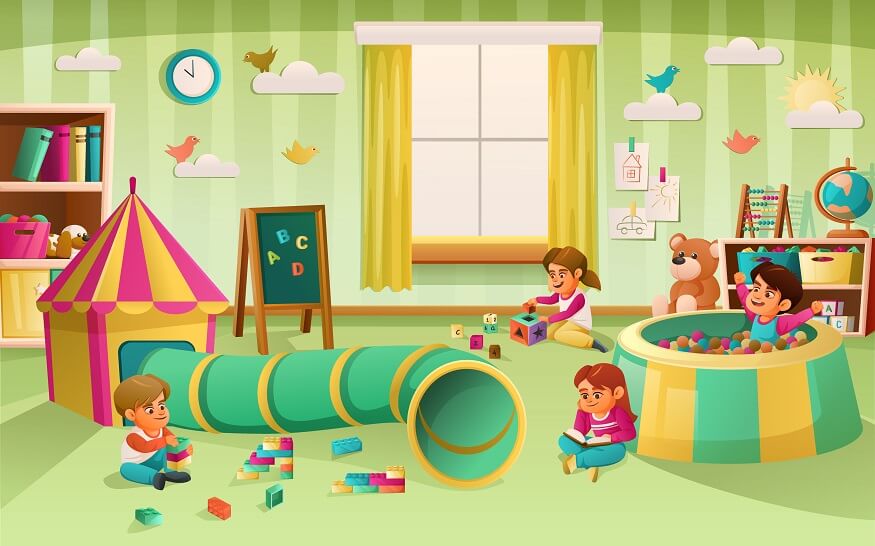Art education in schools has long been regarded primarily as an extracurricular activity. However, with changing times, integrating art into the curriculum has put the thrust on experiential learning and holistic development in students. Art is no longer being looked upon as just a hobby class but as an approach to make classroom learning joyful, productive and engaging for the learners as well as the educators. Touted as a progressive policy for education in India, the New Education Policy (NEP) 2020, has also highlighted the importance of art integration in schools. In this blog, we will discuss ten reasons why arts integration is important for students for their overall academic development.
Also Read: Tips for engaging children in arts and music
Understanding arts integration
Art integration in school is an approach that involves incorporating art with core academic subjects such as maths, science, language arts, and social studies. This approach leverages the power of art to help students understand and retain complex concepts while promoting creativity and critical thinking skills. Art integration is particularly useful for teaching concepts that are difficult to grasp using traditional teaching methods.
Art-integrated learning can take various forms. It involves using art as a tool for understanding and exploring concepts in science, history, literature, or mathematics. For example, students might create visual representations of scientific processes, perform dramatic interpretations of historical events, compose music inspired by literature, or engage in dance activities to explore mathematical patterns. Other forms could include drawing & painting, paper crafts, puppetry, sculpting, photography, performing arts etc.
Arts integration encourages interdisciplinary learning and has gained significant attention in recent years, for the way it integrates artistic expression and creativity with academic content. Central Board of Secondary Education (CBSE) recognises art as a co-scholastic area and encourages schools to incorporate art activities and programs alongside academic subjects.
Also Read: Origami paper buying guide
Importance of Arts Education in school
Here are ten reasons why arts integration is important in schools and why it should be prioritised in education.
- Enhances academic performance
- Develops Cognitive Skills
- Engages Students
- Builds Cultural Awareness
- Promotes Creativity
- Develops Social and Emotional Skills
- Prepares Students for the 21st century Integrating art into education equips students with 21st-century skills, including creativity, innovation, critical thinking, problem-solving, and adaptability. These skills are highly valuable for students in navigating the ever-changing demands of the job market.
- Improves Communication Skills
- Encourages Collaboration
- Makes Learning Fun
Studies have shown that incorporating art into core academic subjects can significantly improve academic performance. Studies have shown that students who participate in art-integrated lessons performed better on language arts and mathematics tests than those who did not, showing an overall 17% increase in academic performance.
Integrating art with the core subjects activates different parts of the brain at the same time. This improves cognitive abilities, including critical thinking, innovation, and problem-solving skills in students. Arts integration also enhances the fine and gross motor skills of students. Whether it is holding a paintbrush, playing a musical instrument, or participating in dance routines, arts integration provides opportunities for students to engage in purposeful movements which help them develop their fine motor skills and gross motor skills.
Students tend to remember information better when they feel actively engaged and involved in the learning process. Integrating art allows students to engage in the process of analysing, evaluating, and creating, thus making learning more interesting, thorough, and inclusive.
Art is a reflection of culture, and using art from diverse cultures can help students develop a greater understanding of the world around them. They learn to accept diverse perspectives and respect differences. Integrating art exposes them to the richness and the inclusivity that lies rooted in traditions and narratives from across the world.
Incorporating art into academic subjects provides students with the opportunity to express themselves creatively. It nurtures creativity, fosters imagination and enhances their sense of curiosity, exploration and artistic experimentation.
Artistic activities create a safe space for students to explore their thoughts, feelings and emotions. Hence, art integration enhances social and emotional skills such as empathy, teamwork, and self-expression. These skills set up students for success in their personal and professional lives by enhancing their self-awareness.
Incorporating art into core academic subjects can help students improve their communication skills. In art-integrated lessons, students are taught to interpret and convey ideas and emotions through artistic expression. This helps strengthen their ability to articulate their thoughts and feelings effectively. Arts integration also serves as a powerful tool for improving the retention of academic content and enhancing learning outcomes. The skills and knowledge acquired through arts integration have a lasting impact on student’s ability to retain information, apply concepts, and succeed academically.
Art integration can provide students with opportunities to collaborate and work together on projects. Students learn to brainstorm, listen actively, plan, negotiate and contribute their strengths towards one common artistic goal. This type of collaboration can help develop teamwork skills, which are essential both in academic settings and in future careers.
Integration of art makes learning fun for students. When students enjoy the learning process, they become more engaged and excited about learning, leading to better academic performance and a lifelong love of learning. Artistic activities capture their interest and imagination, creating a dynamic and interactive learning environment. Studies have found that students who participate in arts-integrated lessons demonstrate higher levels of attention, participation, and persistence compared to traditional classroom settings.
Also Read: Ten Benefits of Learning Drama at Schools
Conclusion
In conclusion, art integration provides students with numerous personal and professional benefits. Integrating art into core academic subjects equips students with essential skills to succeed in a fast-changing world. At EuroSchool, we believe it is our responsibility as educators to provide the best education possible, and art integration is key to achieving this. EuroSchool uses art integration as a key pedagogical approach to provide students with a holistic and enriching learning experience. Through fun activities, projects, and teamwork, students explore and apply their artistic abilities, gaining a deeper understanding of academic subjects. Get in touch with us to know more.










